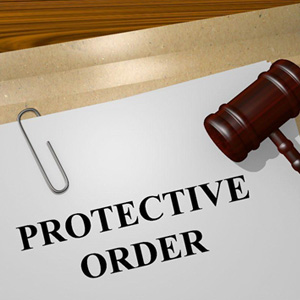
What Is A Protective Order In The State Of Maryland?
A Protective Order is a type of restraining order that one person can get against another. In order to be eligible for a Protective Order, the person against whom you are seeking a Protective Order must ordinarily be a family member or romantic partner. The first step for getting a protective order is to attend either the District Court or the Circuit Court for the county in which you live and to fill out a Petition for a Protective Order.
In your Petition, you should describe exactly what has occurred that has caused you to seek a Protective Order against the other person. In Protective Order proceedings, the person seeking the Protective Order is referred to as the Petitioner, while the person against whom the Order sought is referred to as the Respondent. If a Judge or Commissioner finds that you have met your burden of proof, you will usually be issued a Temporary Protective Order, which remains in effect until the Final Protective Order hearing.
Once the Temporary Protective Order is issued, the local sheriff’s office is tasked with serving the Respondent with the Temporary Protective Order so that the Respondent is put on notice of the Protective Order proceedings. The Court will then typically hold a Final Protective Order hearing which is the last stage of the protective order proceedings. There is a higher burden of proof at the Final Protective Order hearing than at the Temporary Protective Order hearing, so being granted a Temporary Protective Order is no guarantee that the Court will grant a Final Protective Order. Since the burden of proof is higher at the Final Protective Order hearing, it is especially important to have counsel with you to properly represent you at the hearing.
Is A Protective Order The Same As A Restraining Order In Maryland?
Restraining Orders are a general category of Court Orders which encompass two types of Orders, namely, Protective Orders and Peace Orders. Protective Orders are typically awarded against people with whom you are currently in a relationship, with whom you have a child, or with whom you have a familial relationship. In contrast, if you are seeking a Restraining Order against a friend, an acquaintance, or a co-worker, then a Peace Order would typically apply.
How Can I Request A Protective Order?
As noted above, the first step to obtaining a Protective Order is to attend your local District Court or Circuit Court and fill out a Petition for a Protective Order. Once you have filled out your Petition, you will either have your case heard by a Judge or Commissioner, and the Judge or Commissioner will determine if you meet the criteria for the issuance of a Protective Order. They will also decide if you have met your burden of proof for the Protective Order at the time of application.
How Long Do Protective Orders Generally Last?
A Temporary Protective Order generally lasts about seven days, until the Final Protective Order hearing is held. The Temporary Protective Order will provide a date for a Final Protective Order hearing; the Temporary Protective Order is effective until that hearing date. If the Respondent is not served prior to the Final Protective Order hearing date, the Court has the ability to extend the Temporary Protective Order for your benefit. The Final Protective Order, if issued, may be granted for up to twelve (12) months. Under certain circumstances, the Final Protective Order may be extended past twelve (12) months.
Can I Change A Protective Order?
Generally speaking, Protective Orders cannot be amended. There are certain circumstances in which you could file a request with the court to modify the Protective Order. However, the Court will generally not modify a Protective Order unless both parties agree to the modification or there are unique circumstances warranting a modification time for the respondent to retrieve their items. Such a mutual agreement could be put before the court for approval, and the court may grant the modification. Generally speaking, unless there is such a mutual agreement, the court will not modify a protective order.

Attorney Robert Greenberg is a dedicated Maryland lawyer based in Annapolis who is well-versed in the vital battles to secure peace orders and protective orders. Too many people go without these vital legal protections simply because they do not understand the system or know how to use it and prove their case – Attorney Greenberg aims to fix that.
Connect with The Greenberg Legal Group to hear all about new laws and effective strategies in the field of protective orders and peace orders so that you will never have to feel helpless when under threat again.
Call Us Now To Get Your Case Reviewed (410) 650-4242
What Happens If The Terms Of A Protective Order Are Violated?
The respondent may face severe legal consequences as a result of violating a protective order. The respondent may be arrested or sent to jail for a limited period of time, plus there are a number of other remedies that the court can impose. The purpose of those penalties is to ensure that victims of domestic violence, and people who have been subjected to treatment which warrants a protective order, are really protected and do not have to continue to endure contact from the respondent while the protective order is in effect.
Can My Protective Order Be Enforced In Another State?
Typically, you would need to have your protective order recognized by another state if you were to travel or relocate. The protective order is still a valid order, even outside of the state of Maryland. However, the authorities in another state may or may not be able to enforce an order issued by a court in the state of Maryland. Thus, it is best practice to try to have a court in the other state recognize or adopt the protective order so that it becomes enforceable by local law enforcement.
A Protective Order Was Issued Against Me; Can I Get The Order Dropped?
Usually, it is not possible to have a protective order dropped, unless you reach a mutual agreement with the petitioner to rescind or drop the final protective order. In most cases, however, the final protective order will remain in effect for the time length specified.
The only legal way to have a protective order possibly dropped is a procedural defect that comes to light and which occurred before the granting of the final protective order. For example, if you were not served with the temporary protective order and you were not aware of the protective order proceedings.
In such a case, you may be able to argue that the final protective order was issued without proper notice being given to you. However, a protective order cannot be dropped or rescinded in most cases unless there is a mutual agreement to do so.
For more information on Protective Orders in the State of Maryland, an initial consultation is your next best step. Get the information and legal answers you seek by calling (410) 650-4242 today.

Attorney Robert Greenberg is a dedicated Maryland lawyer based in Annapolis who is well-versed in the vital battles to secure peace orders and protective orders. Too many people go without these vital legal protections simply because they do not understand the system or know how to use it and prove their case – Attorney Greenberg aims to fix that.
Connect with The Greenberg Legal Group to hear all about new laws and effective strategies in the field of protective orders and peace orders so that you will never have to feel helpless when under threat again.
Call Us Now To Get Your Case Reviewed (410) 650-4242